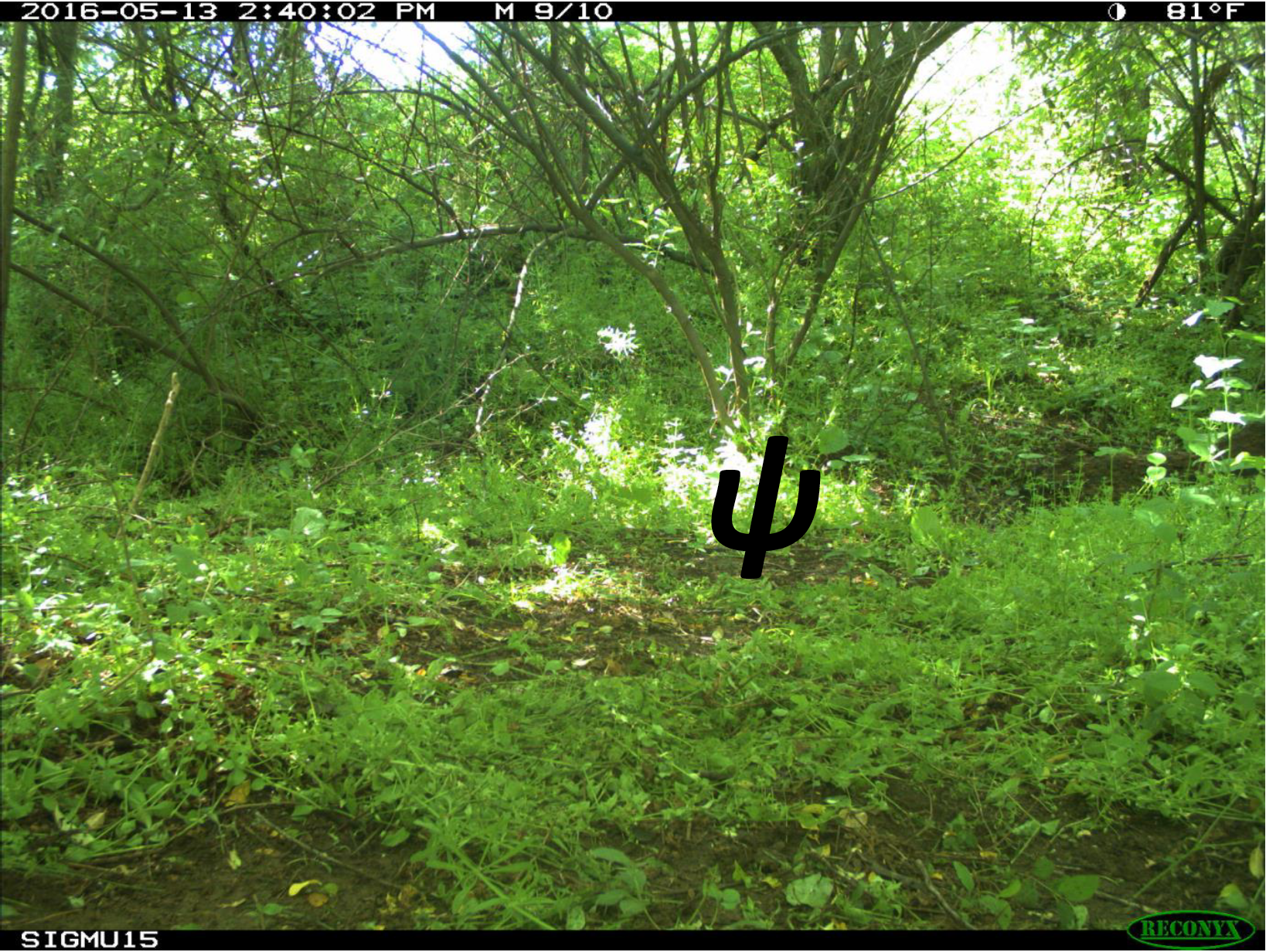Are you interested in understanding where species occur and why they occur there? Do you think about the limitations of our wildlife surveys? If we set out a camera trap and never detect a jaguar, was it ever there? I guess it depends! Was the camera on a trail? Was the camera out for three days or three months? Did we survey our protected forest patch with 2 cameras or 200 cameras? Was it the rainy season or the dry season? Were there poachers in the area or abundant prey? These are all the types of important questions we should be asking when we think about what drives species distributions and how to better detect, predict, and inform conservation actions. Over the years, I have taught several quantitative ecology workshops — particularly occupancy analyses — in an effort to teach students how to develop research questions, collect and analyze data to answer pressing questions in wildlife ecology and conservation. I was recently inspired by the awesome showing of #BlackMammalogistsWeek and I kept thinking about ways that I could help make mammalogy and ecology more accessible to historically underrepresented groups in STEM, especially BIPOC students. In an effort to make science more accessible to students starting out on their research journeys, I have recorded a recent occupancy workshop that I gave via zoom to the University of Central Oklahoma (organized by my MS adviser Dr. Vicki Jackson). Those four short modules are available on my YouTube channel and they are free to share and hopefully useful for students to get started on their own exciting ecological research. Furthermore, If you are a professor or professional and you would have paid for this free content, then I encourage you to donate to the Black Mammalogists Week BIPOC Scholarship Fund here. Please feel free to reach out if you have any questions and I hope these modules and content find you well!
I have been working in Costa Rica for over a decade now. It's really one of the most special places on earth for me and it is also home to many of my favorite animals: jaguars, tapirs, tayras, the list goes on! Many of these animals are quite rare. In all the years that I've been camera trapping, we only recently detected our first jaguar in La Selva in 2018 with my students Adrian Figueroa and Matthew Willson. However, one animal that has always held my attention and a special place in my heart is one of the lesser known felids: the ocelot. Ocelots are arguably the most striking of all the cats with their beautiful spots and anastomosing stripes. I've published some results from my work examining how visual and scent lures influence ocelot detection, but I've never fully ingested all the ocelot data potential that we have collected over the years. I have a new student, Dani Mayes, from Meredith College here in Raleigh that is up for the task of trying to use the unique spot patterns to identify all the individual ocelots and see if we have enough photographic captures and recaptures to robustly estimate their densities in the San Juan - La Selva Biological Corridor. Stay tuned for more on this as we explore these data and in the meantime - enjoy this video of an ocelot mama and her cub from La Selva, 2018!
Look carefully at these camera trap photos. Notice anything in the photos? They looked like camera misfires to me at first glance. These photos are from our long-term woodrat supplemental nest monitoring project in collaboration with Jeremy Dixon from Crocodile Lake National Wildlife Refuge. It's a good thing that refuge interns, Josh Sands and Katie King, have great eyes and attention to detail! If you look at the bottom right corner of the photos, you can see the subtle movement of one of the most deadly threats to woodrats and all mammals in South Florida: the invasive Burmese python. While we have know Burmese pythons are a threat in Key Largo for several years now, ongoing research continues to reveal that these large snakes are quite difficult to find in the environment so various methods including the use of traps, transect searches, and even excitable python detection dogs are commonplace for finding pythons. We can now add remote camera traps to our python detection methods. Although they are cold-blooded and slow, it seems that when pythons cross the infrared sensor of a camera trap they will still trigger the photo to be taken. This could be encouraging and add another method to our arsenal to survey for these deadly predators in South Florida. Hopefully, we can track down this snake and remove it from the environment before it gets too far beyond nest 287!




